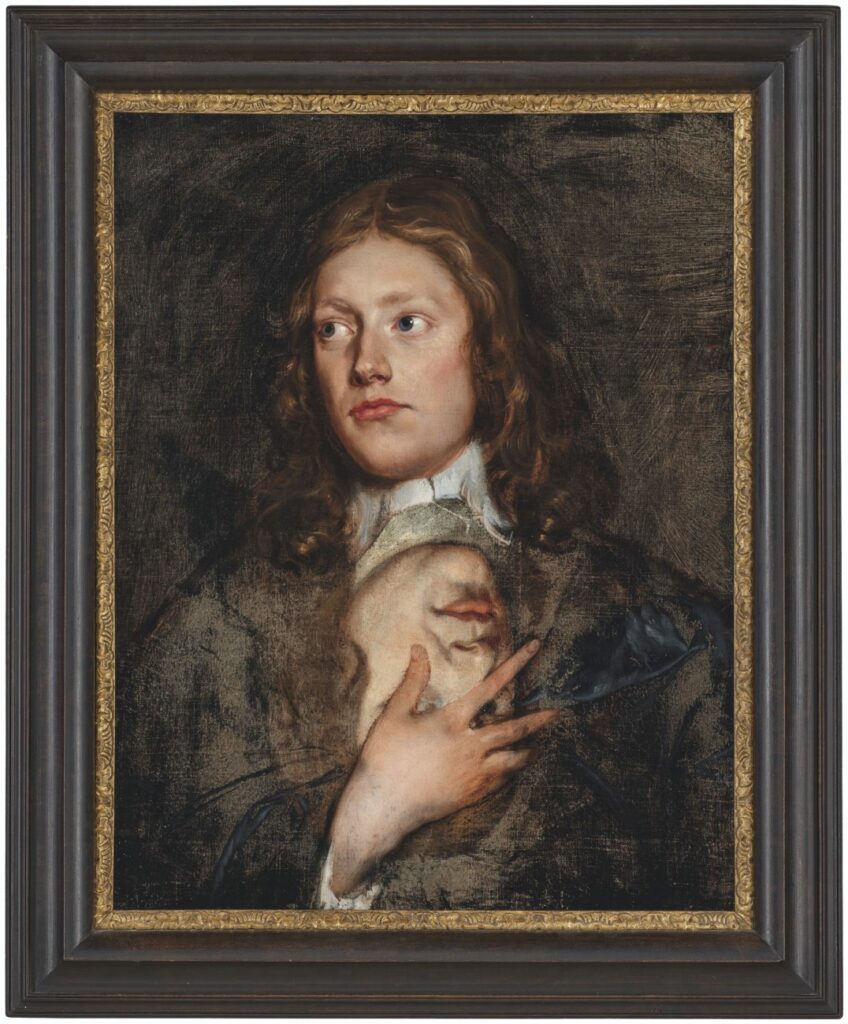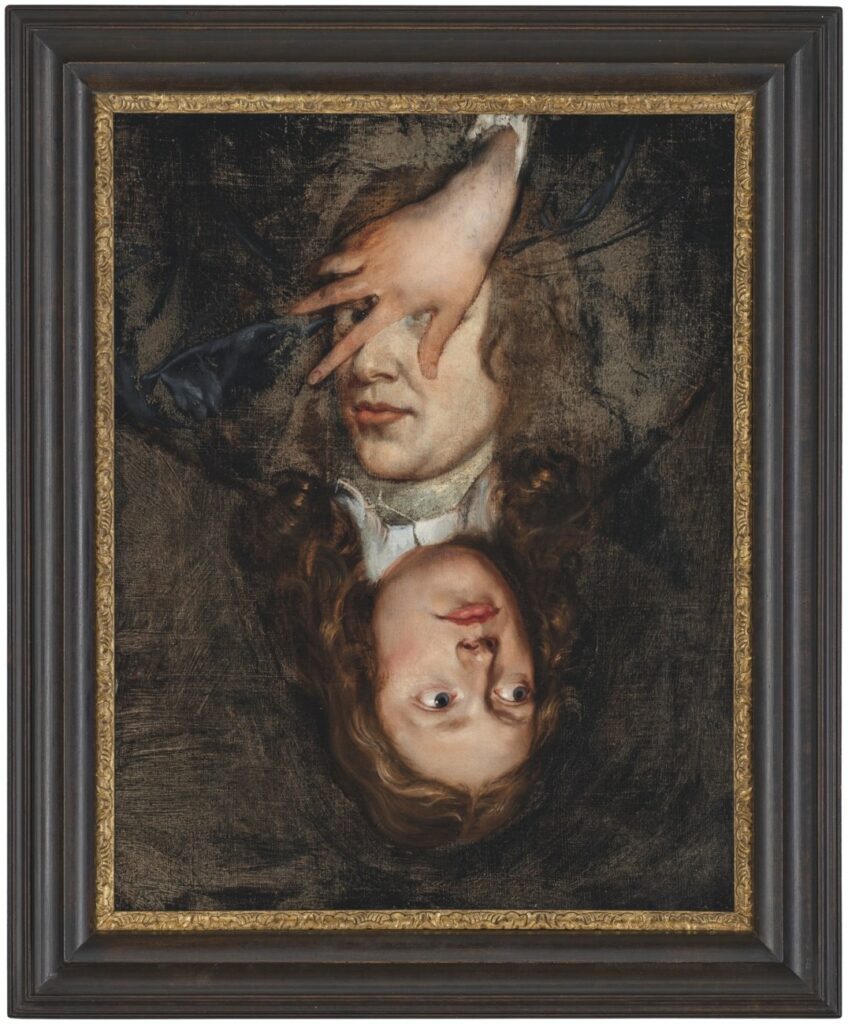
I don’t know anything about 17th century English painter Isaac Fuller, except that he has a dozen paintings attributed to him at the National Portrait Gallery. And, according to the brief text accompanying this painting at Christie’s in 2021, he was a “flamboyant painter,” and a “notorious drunkard” with a “bohemian lifestyle” whose fresco in All Souls at Oxford was “too full of nakeds” to last, and whose last series of works consisted of “decorative schemes” for a string of taverns he frequented.

None of that is quite as interesting as this picture, two pictures, really, one on top of and around the other. The portrait underneath, which is now upside down, was uncovered in a recent restoration, says Christie’s. The way it’s been uncovered to keep as much of each portrait intact does make it feel like a deliberate composition, not just an overpainting. Like that extraordinary Ludolf Backhuysen seascape painted around that Isaack Luttichuys portrait that Simon Dickinson brought to TEFAF this year.
What was up in the late 17th century that painters were piling paintings on top of each other, though?
